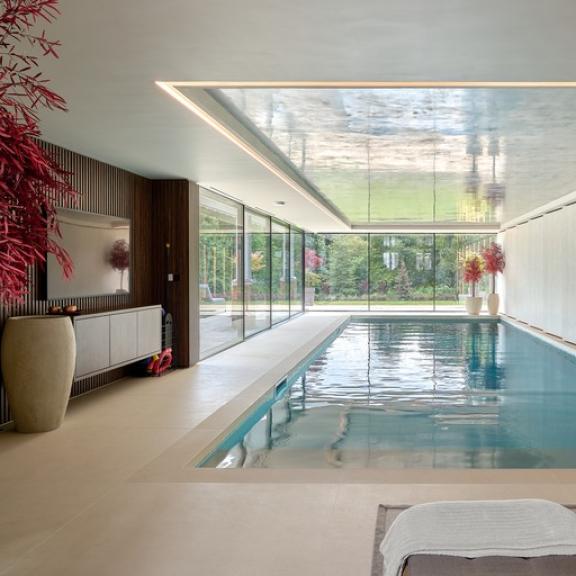Make yourself stand out for jobs
We take a look at the ways to outshine other applicants when you’re looking for an interior design role

Interior design is a competitive industry. Whether you are applying for your first job, or want to move up the career ladder, you can assume there are many highly qualified candidates vying for the same post. The question therefore becomes one of making your application stand out from all the others to give yourself the very best chance of being offered an interview and subsequently the job.
But what are the tactics you can use to make yourself an applicant employers will be interested in when they’re faced with a huge number of CVs, letters and portfolios? We’ve reviewed the strategies you can employ and asked BIID affiliate member Simon Hamilton of Design Career Consulting to share his expertise.
Work on your CV
Whichever stage you have reached in your interior design career, it’s important to make your CV distinct. ‘Starting with an engaging profile or about section which introduces you as a person and not just as a professional is important,’ says Simon.
It’s crucial that a CV is customised – a one-size-fits-all-employers approach will not make it stand out. ‘Tailor your CV to appeal to the sector to which you are applying to ensure you highlight your best skills, experience and how these would be an asset,’ says Simon. Be sure, too, to let the employer know about your successes. ‘Give excellent, but succinct, examples of how you have already made a difference,’ says Simon.
While you might want to advertise your skills broadly by putting your CV online, Simon advises against this. ‘It’s a risk allowing the world to know all your personal details online, so I’d say please don’t,’ he says. ‘Only provide your CV as a PDF to those companies or individuals you want to apply to work for.’
And while it’s a basic, it is worth repeating that you must always check your CV for spelling mistakes. When employers are inundated with applications for a post, it could be a way they narrow down the field.

Put together your portfolio
Creating an excellent portfolio is crucial, of course. ‘This is as important as any design pitch or project so give yourself time, some parameters and a deadline to work to,’ advises Simon. ‘Always have more than one version of your portfolio and save these versions as sample PDFs,’ he adds. ‘Do not be tempted to send your entire portfolio when applying for a job.’
If you are applying for a first job, on the other hand, and your portfolio is not extensive, you might consider including a personal project that will show your own vision and how this would be realised. This can make your portfolio distinct from that of your fellow graduates.
Use social media
Social media accounts can be valuable in making yourself stand out, but employ them in a manner you feel comfortable with. ‘There are numerous ways that social media can work well in promoting yourself online, but don’t feel pressured or overwhelmed,’ says Simon. ‘Do what suits you.’ The essential Simon recommends? ’Create a good and up to date profile using Linkedin,’ he suggests.
Interaction is a good strategy. ‘Be prepared to comment on subjects that matter to you and get involved in the design community online,’ says Simon. Pay attention to others’ social media accounts, too. ‘Follow the designers and suppliers you want to work with,’ he advises.
Factor in recruitment consultancies
Recruitment consultants might be the conduit to the role you want, so it’s worth considering how to reach them. The way to stand out, according to Simon? ‘By contacting recruiters and getting to know what they are looking for,’ he says. ‘Go and see them in person. Do your homework and look at the type of roles they deal with and contact them using their first name. Do some research via their website and use Linkedin.’
Other ways to stand out
It’s not only your CV, portfolio and social media use that offer the possibility of outshining other job candidates. ‘Get out and about in the design community,’ recommends Simon. ‘Be sure to attend events such as CPDs, showroom launches, Decorex, Focus, Design Central, London Festival of Architecture, Clerkenwell Design Trail, Clerkenwell Design Week, London Design Festival and other major design events that interest you.’ The BIID events diary has lot's of opportunities for networking.

Prepare well
Interior design roles attract many candidates, but there are strategies that will make your application one that overshadows those of less well prepared and passionate designers. It is always worth putting the effort into customising your CV and portfolio for a particular role as well as communicating clearly how you approach and execute projects. Equally, networking both on and offline, and focusing on recruitment consultants as well as targeting individual roles are key to distinguishing yourself from the crowd.
For more careers advice, visit the BIID Interior Design Careers Hub.
Explore new resources from the BIID. Seeing a padlock? Just login or become a member to view.
View the highlights from our 60th anniversary party
We asked Anna Burles: What makes the perfect software?
Discover the smart home technology awards with Platinum Partner, CEDIA
Explore the latest, member-exclusive, templates designed to make your life easier.
University of Gloucestershire wins the BIID Student Design Challenge 2025.





